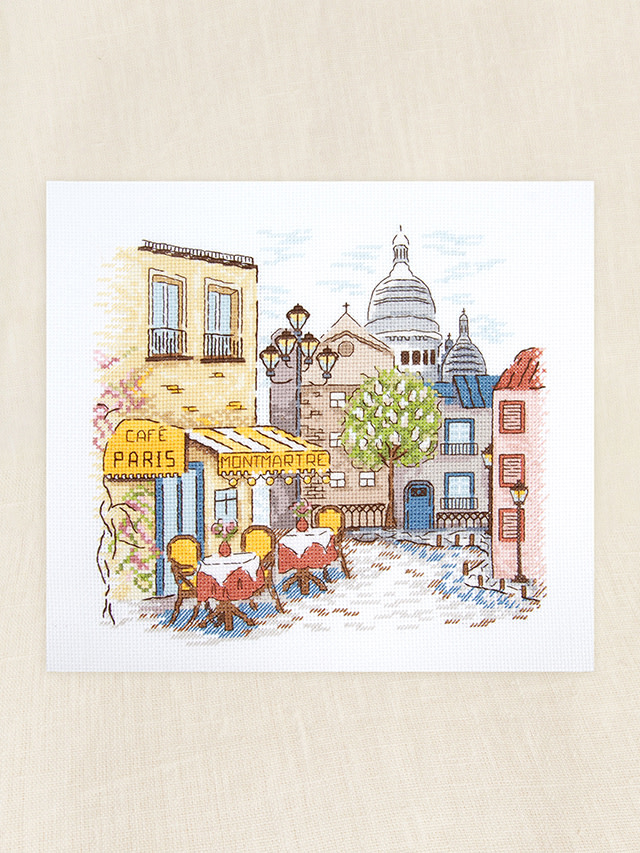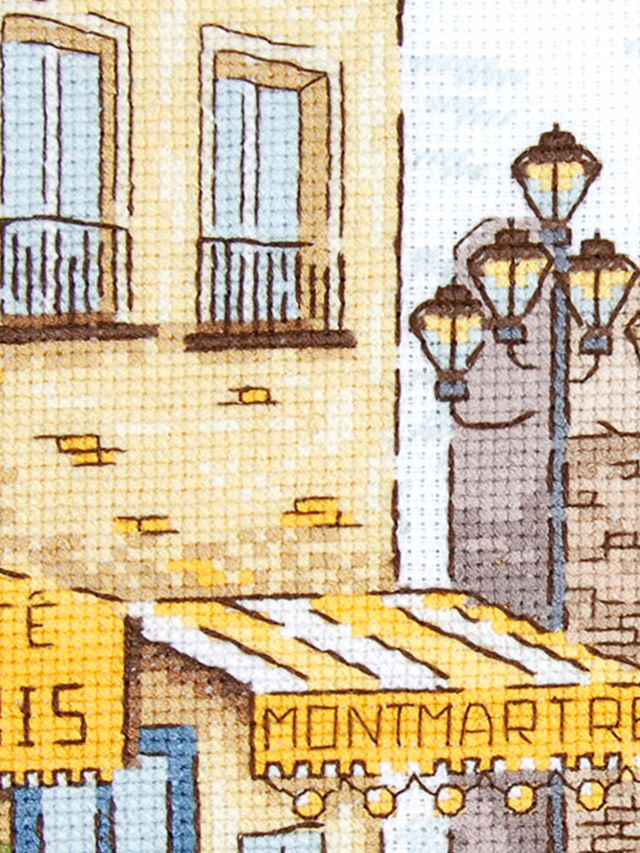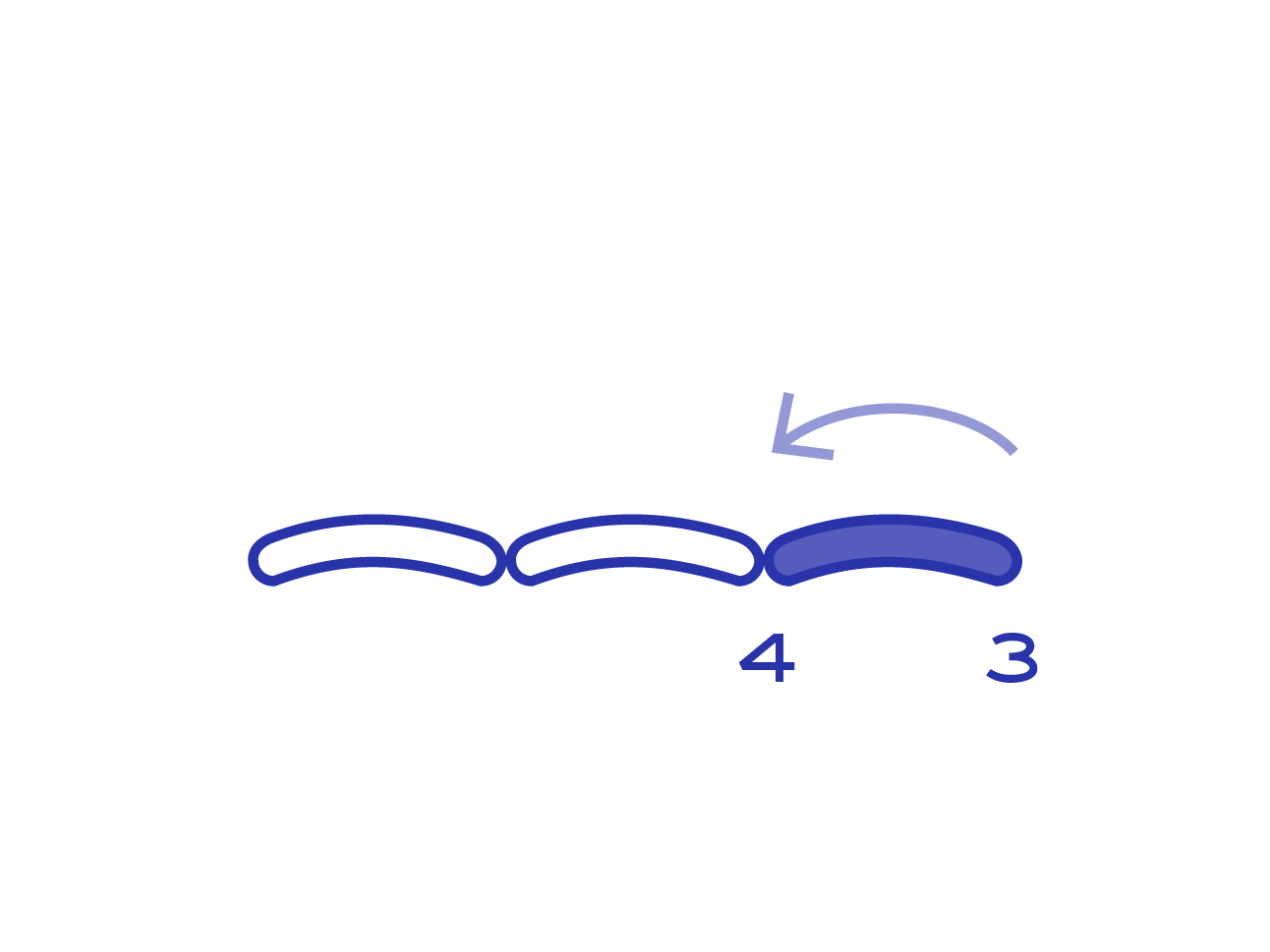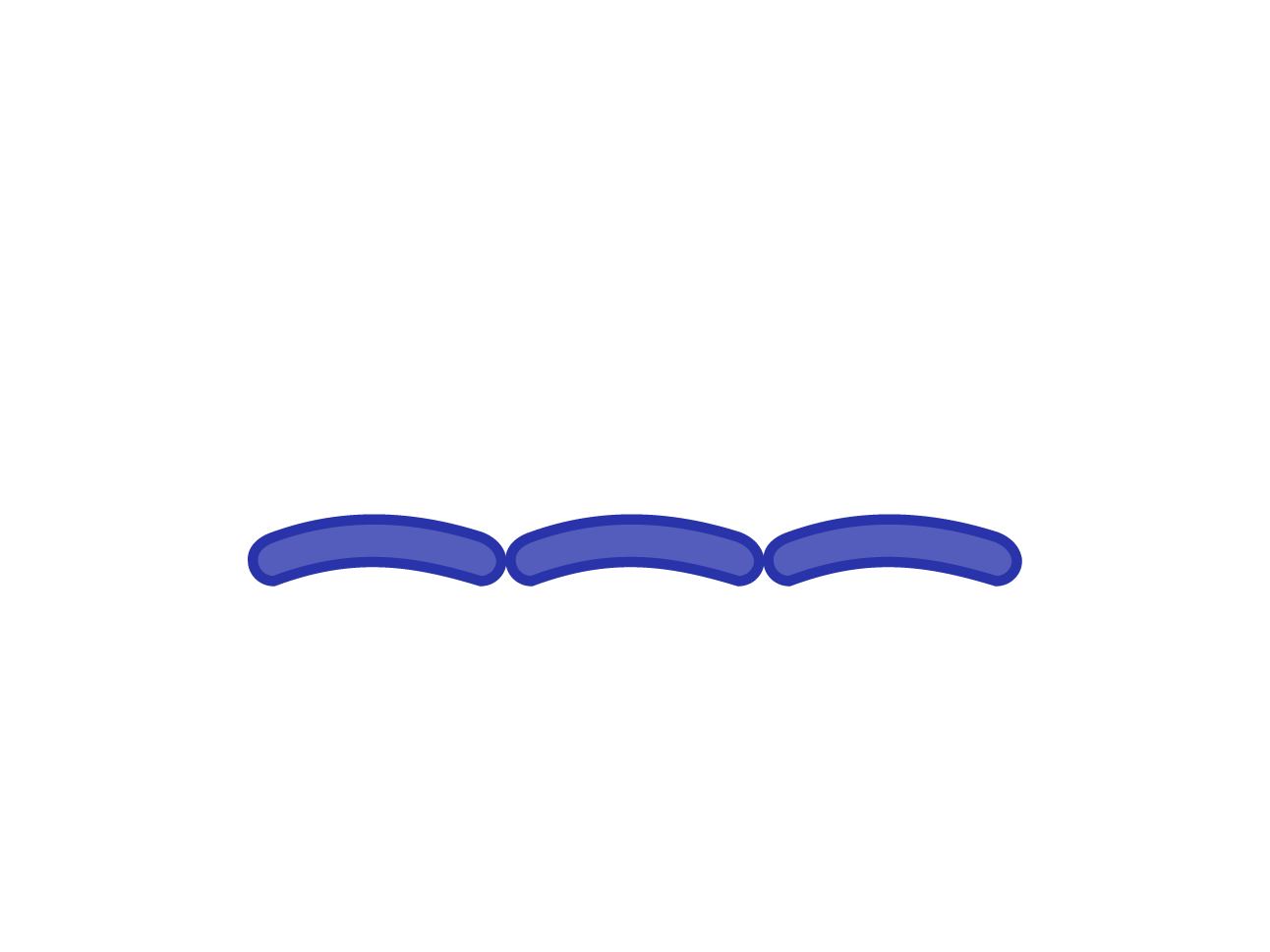In diesem Artikel sehen wir uns an, wie die Kreuzstichdesignerin Anna Matvieieva den Rückstich in ihren Designs einsetzt, die sie für die DMC Designer Kollektion entworfen hat, und geben Ihnen Tipps, wie Sie diesen bescheidenen Stich in Ihre eigenen Kreuzstichprojekte integrieren können. Dieser kleine Stich kann das Aussehen eines Kreuzstichmotivs wirklich verändern, denn, wie Anna sagt, können Sie ihn "wie Make-up verwenden, um Ihre Arbeit zu vervollständigen und Details zu betonen."
Was ist ein Rückstich?
Der Rückstich ist ein flacher Grundstich, der eine durchgehende Linie ergibt. Jeder Stich wird zurück in Richtung des vorherigen Stichs gearbeitet, daher der Name. Dieser einfache Stich eignet sich hervorragend, um zusätzliche Details wie Gesichtszüge oder sogar kleine Texte hinzuzufügen. Er ist auch besonders nützlich, wenn man ein Design umranden möchte, was einem Projekt einen schönen und edlen Abschluss verleiht.
Die Kreuzstichdesignerin Anna Matvieieva verwendet den Rückstich in ihren Entwürfen, um ihnen eine skizzenhafte, künstlerische Note zu verleihen.
Formen hervorheben
Bei dem Entwurf des Eiffelturms, den Anna kürzlich für die Designer Kollektion entworfen hat, verwendete sie den Rückstich, um die Struktur des Turms selbst darzustellen und ihn in den Mittelpunkt ihrer charmanten Komposition zu stellen. Sie verwendet den Rückstich auch, um die Umrisse der Dächer zu definieren. Bei dem Efeu auf der linken Seite des Motivs überlagert die Farbe die Rückstichkonturen, was dem Werk eine einzigartige Aquarelloptik verleiht.


In ihrem Montmartre-Entwurf verwendet Anna Rückstiche, um die Rundung der Kuppel zu betonen und die feinen Details der Fensterläden und Möbel hervorzuheben.
Es ist erwähnenswert, dass Anna um die Fenster herum und auch in anderen Bereichen gebrochene Linien verwendet, was dem Stück eine künstlerische Note verleiht.
Außerdem verwendet sie keine schwarzen Fäden für die Umrisse und feinen Details. Stattdessen entscheidet sie sich für einen weicheren Effekt, indem sie dunkle Farbtöne wählt, die zu den Farben in Ihrer Arbeit passen. So werden die Konturen betont, ohne zu streng zu wirken.


So geht der Rückstich

Stechen Sie die Nadel dort aus, wo die Linie der Rückstiche beginnen soll. Entscheiden Sie, wie lang Ihre Stiche sein sollen, und stechen Sie die Nadel wieder ein, um den ersten Stich zu vollenden.

Lassen Sie eine Lücke in der Länge des ersten Stichs und stechen Sie die Nadel wieder aus. Arbeiten Sie in Richtung des ersten Stichs zurück und vollenden Sie den zweiten Stich an, indem Sie die Nadel dort einstechen, wo der erste Stich endet.

Fahren Sie mit gleich langen Stichen fort, indem Sie eine Stichlänge weiter ausstechen und den Stich dort beenden, wo der vorherige Stich aufhört. Unsere vollständige, illustrierte Kreuzstich-Anleitung finden Sie hier. Schauen Sie sich auch unsere Kreuzstich-Videotutorials hier an.

Stechen Sie die Nadel dort aus, wo die Linie der Rückstiche beginnen soll. Entscheiden Sie, wie lang Ihre Stiche sein sollen, und stechen Sie die Nadel wieder ein, um den ersten Stich zu vollenden.

Lassen Sie eine Lücke in der Länge des ersten Stichs und stechen Sie die Nadel wieder aus. Arbeiten Sie in Richtung des ersten Stichs zurück und vollenden Sie den zweiten Stich an, indem Sie die Nadel dort einstechen, wo der erste Stich endet.

Fahren Sie mit gleich langen Stichen fort, indem Sie eine Stichlänge weiter ausstechen und den Stich dort beenden, wo der vorherige Stich aufhört. Unsere vollständige, illustrierte Kreuzstich-Anleitung finden Sie hier. Schauen Sie sich auch unsere Kreuzstich-Videotutorials hier an.
8 Top Tips for Using Back Stitch in Cross Stitch
Use these tips for adding back stitch to your cross stitch projects.
Add back stitch after you have completed your cross stitches because they can overlap areas of stitching.
If you are using Aida it may be necessary to pierce the fabric and stitch between the weave rather than through the main holes to allow your placement of stitches to follow curves or less uniform shapes.
Try stitching on evenweave instead of Aida this can make the placement of back stitches (especially for curved shapes) a little easier.
Use darker shades of the colors in the cross stitch instead of black for a more subtle look.
Use back stitch to accentuate key areas and add definition.
Use a single strand of embroidery floss to backstitch fine outlines or, for thicker outlines use multiple strands or two rows of back stitch.
Keep stitch length consistent to create a uniform result.
Take care with your tension. If you pull back stitch too tight it may pucker the fabric.
Wir hoffen, dass dieser Artikel hilfreich war und dass Sie sich inspiriert fühlen, den Rückstich für Ihr nächstes Kreuzstichprojekt auszuprobieren. Wir würden uns freuen, Ihre Ergebnisse zu sehen. Verwenden Sie #DMC, wenn Sie Ihre Arbeit teilen möchten, und vielleicht erscheint Ihr Projekt sogar in einer unserer Fotogalerien auf dmc.com.



